
The opening of Herne Hill Velodrome in south London in 1891 brought bicycle racing to a British public eager to see the sport.

The opening of Herne Hill Velodrome in south London in 1891 brought bicycle racing to a British public eager to see the sport.

Tricycle racing was another popular event, and one which required a deft technique when cornering at speed. This was Mr J. Rowley on his machine in 1895.

The penny-farthing remained popular for several decades after its invention, albeit partly for its novelty value.

The 1908 London Olympics proved to be another landmark occasion, with huge crowds at White City for the cycling events.

Charles Bartlett comes home to win the 100-kilometre track race, out-sprinting his compatriot Charles Denny.

Benjamin Jones took two of Britain’s five gold medals, in the 5,000 metres and team pursuit.
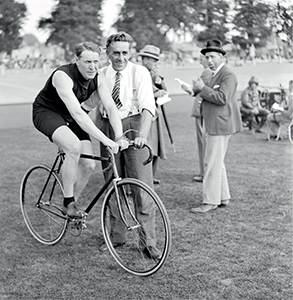
Another early Olympian, Bill Bailey, at a National Cyclists’ Union amateur meeting at Herne Hill in 1929.

The actress Gracie Fields was there to present the trophy to the winner of the Cycle Championship for Young Ladies.
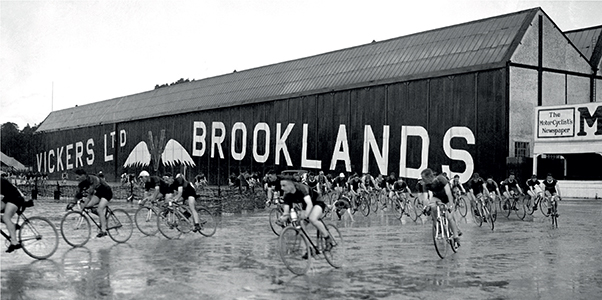
The Brooklands track in Surrey was another popular venue for cycle racing throughout the 1930s.

Reg Harris crosses the line to win the sprint at the world championships in Paris in 1947.

A year later, when the Olympics returned to London, he won two of Great Britain’s three silver medals, to go with two bronzes, including the team pursuit.
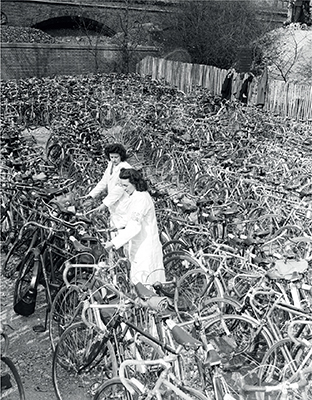
A telling image from the Good Friday Festival of International Cycling, also held at Herne Hill in 1948. The sport enjoyed a post-war boom in popularity and participation.

Ladies in swimwear at a publicity stunt for the latest Raleigh bicycles in 1951, at the British Sports and Games Fair.

The 1950s saw the emergence of Britain’s greatest ever racing cyclist – Beryl Burton. Her achievements are simply phenomenal.
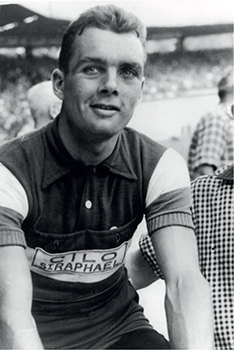
In 1955, Brian Robinson became the first British cyclist to finish the Tour de France, and finished an impressive 14th overall in 1956, the same year that Tom Simpson first came to the general public’s notice, at the Olympics in Melbourne.

Here he is on his way to Australia with Don Burgess, with whom he would win bronze in the team pursuit.

Robinson also recorded Britain’s first stage win in the Tour de France in 1958.
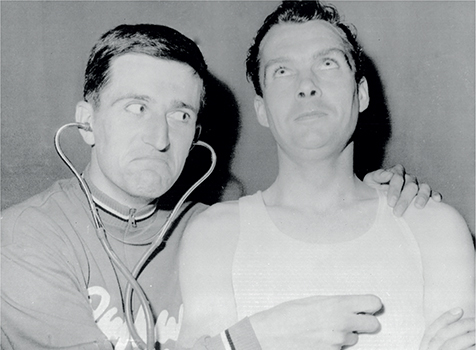
Simpson and Robinson fool around for the cameras ahead of the 1961 Tour de France.
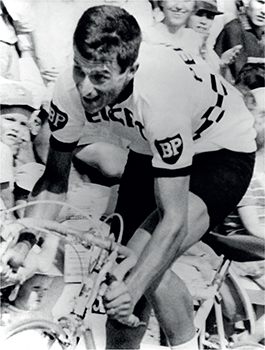
Simpson would become the first British rider to wear the yellow jersey the following year, then in 1965 won both the world road race championships and BBC Sports Personality of the Year.


Simpson proudly sports the rainbow stripes. Cycling was the height of fashion.
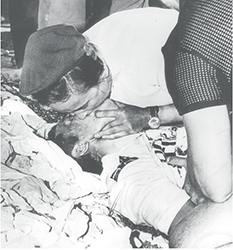
His life came to a tragic end on Mont Ventoux in 1967, however.

Cyclists pay homage to their hero at Simpson’s funeral in the Nottinghamshire village of Harworth.
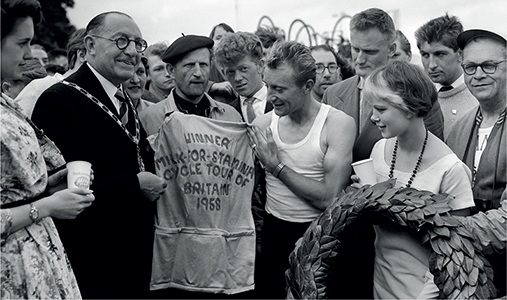
A rather retro winner’s jersey for the Austrian Richard Durlacher, inaugural champion of the ‘Milk-for-Stamina Cycle Tour of Britain 1958’.
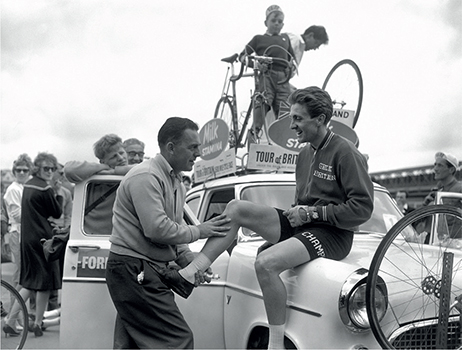
Bill Bradley was the first British winner of the Milk Race, in both 1959 and here in 1960.

On the day that she received the MBE in 1964, Beryl Burton joins stage seven winner Mike Cowley in the traditional milk-drinking.

The Milk Race did not always enjoy bumper crowds and also had its fair share of teething problems, for instance in 1968, when two lorries blocked the road during the stage from Bournemouth to Paignton.


Stage one of the 1976 Milk Race in Brighton, always one of Britain’s most popular cycling towns.

Malcolm Elliott celebrates winning the Kellogg’s Tour of Britain in 1988 after a city-centre finish in London.

Robert Millar in the distinctive Kellogg’s ‘K polka-dot’ King of the Mountains jersey in 1990. Channel 4’s television coverage gave cycling a new audience.

Bradley Wiggins joined the great pantheon of Tour of Britain winners in 2013, and the race continues to go from strength to strength.
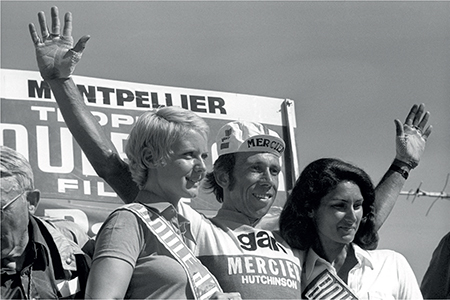
Barry Hoban takes the plaudits after one of his eight Tour de France stage wins, in Montpellier in 1974. That would be a record for a British rider until Mark Cavendish came along.
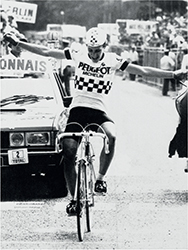
Robert Millar with a stage victory at the Tour in 1983. He would break new ground by winning the mountains classification the following year.

Support for Sean Yates, another of the great British Tour riders and select group of yellow jersey wearers.

Cavendish is congratulated by his road team captain, David Millar, after becoming world champion in Copenhagen in 2011.

Bradley Wiggins greets the hordes of British fans after winning the Tour de France in 2012.

With Chris Froome’s victory the following year, the colours of red, white and blue were by now firmly established at the top of the cycling world.
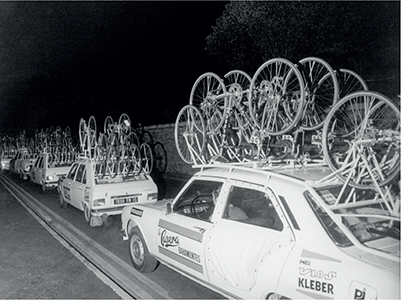
The Tour de France first landed on British shores in 1974, but it was under the cover of Devon darkness.

The solitary 1974 stage speeds along the Plympton bypass, not that many people are looking at Barry Hoban leading the race.

There was a far better reception for the Tour in 1994, especially after Chris Boardman had been in yellow. Here he shares a joke with Tony Rominger and Greg LeMond on stage four from Dover to Brighton.

When Christian Prudhomme announced the return of the Tour de France to Britain in 2014, paying due homage to Tommy Simpson, it was in the full knowledge of the massive success of its visit seven years previously, when Bradley Wiggins narrowly failed to make the podium in the prologue on a wonderful day in London.
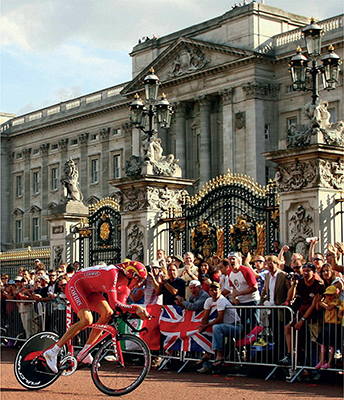

Emma and Laura Trott chat before the start of stage four of the Women’s Tour in 2014 – it was an historic week in cycling history met with a rapturous reception – while few people could have foreseen the sheer quantity of fans who turned out to watch the Tour de France in Yorkshire. Just brilliant.
